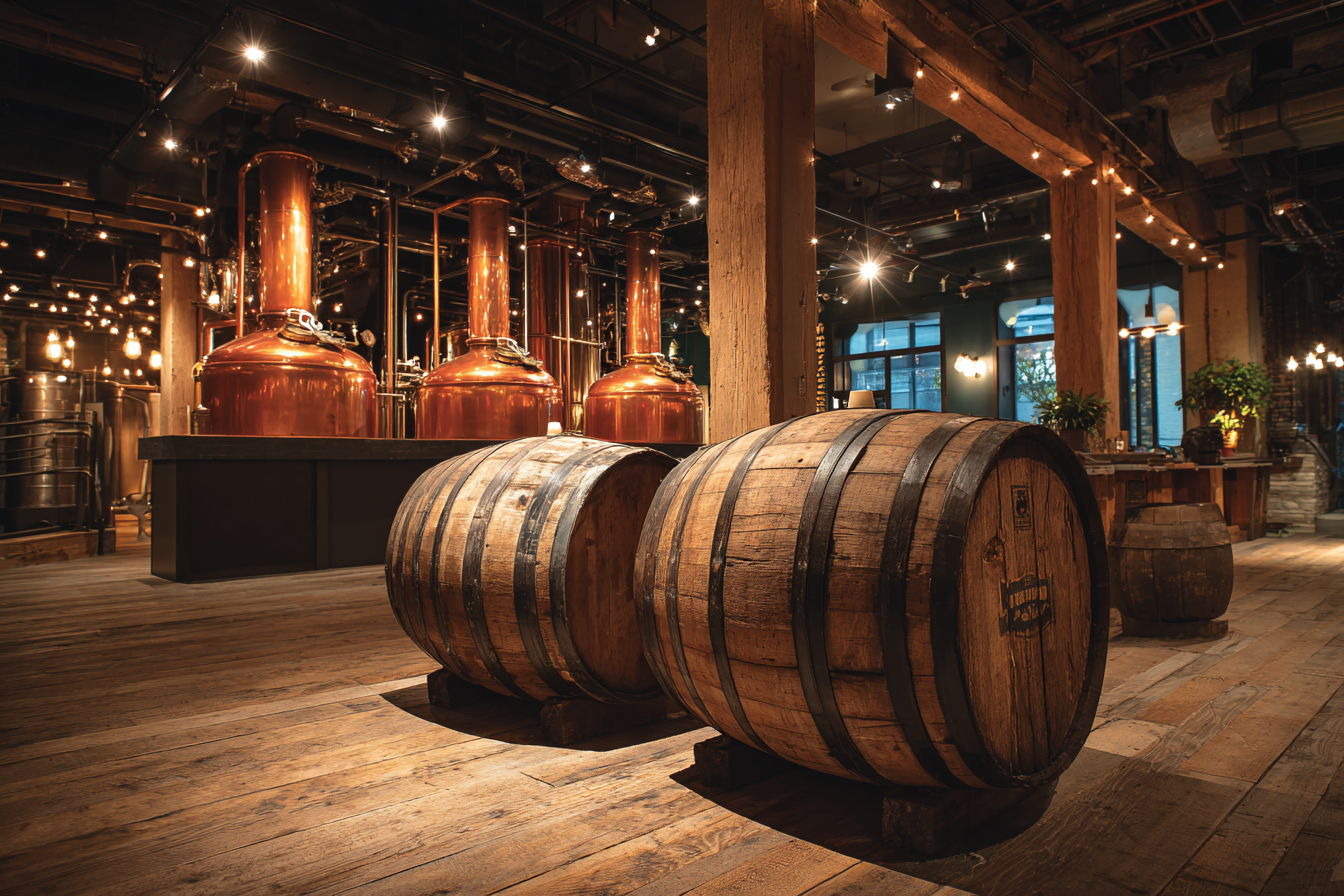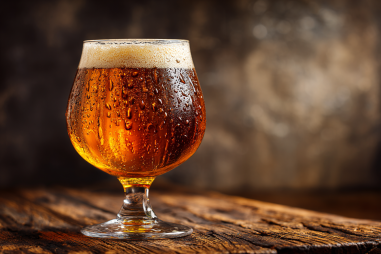Wood-aged beers hold a special place in the world of brewing, revered for their depth of flavor and unique character. The process of aging beer in wooden barrels imparts complex aromas and tastes that are difficult to achieve otherwise, making it an exciting endeavor for both professional brewers and home enthusiasts. If you’re curious about how wood-aging works and want to try your hand at crafting your own, this guide will take you through each step of the wood-aged beer brewing process, demystifying the tradition one pour at a time.
Introduction to Wood-Aged Beer
Wood-aged beer is a style of brewing where beer is matured in wooden barrels or vessels for a period, allowing it to interact with the wood and any residual flavors contained within. Historically, barrels made from oak, chestnut, or other hardwoods were not only used for storage but also contributed to the beer’s flavor profile. Over time, brewers recognized the potential of intentionally aging beer in these barrels to develop new, more complex taste dimensions such as vanilla, caramel, tannins, and sometimes even notes of bourbon, wine, or sherry, depending on the barrel’s history.
Wood-aging is particularly popular for styles like stouts, sours, barleywines, and strong ales. This process adds an element of terroir and craft that elevates a simple beer into an artisanal product. However, mastering this technique requires knowledge, patience, and careful attention to detail.
Basics of Brewing Beer Before Aging
Before diving into aging, it’s essential to start with a solid foundation: brewing a quality beer. Wood-aging works best on beers with a robust body and ample residual sugars to interact with the wood. Common base styles for wood-aging include:
- Barleywines
- Imperial stouts
- Strong ales
- Sour ales and wild-fermented beers
The brewing process typically involves mashing malted grains to extract sugars, boiling the wort with hops to add bitterness and aroma, and fermenting with yeast to convert sugars into alcohol. Achieving a clean fermentation is crucial because the wood and aging process can amplify any flaws.
Once fermentation is complete, brewers often allow the beer to condition briefly before transferring it to barrels for aging. This conditioning helps stabilize the beer and reduce unwanted yeast or sediment before wood exposure.
Selecting the Right Wood Barrels and Types
Choosing the right barrel is one of the most critical steps in wood-aging. The wood species, previous barrel contents, and barrel condition all impact the flavor extracted into your beer. Here are the common variables to consider:
- Wood Type: Oak is by far the most popular for barrel aging, as it offers a nice balance of flavor compounds like vanillin, tannins, and lactones without overpowering the beer. Other hardwoods such as chestnut or cherry are less common but can bring unique notes.
- Barrel History: New barrels (or freshly toasted ones) impart stronger wood and vanilla flavors. Used barrels that previously held bourbon, wine, rum, or sherry contribute complementary flavors such as caramel, spice, fruitiness, or smokiness to the beer.
- Barrel Size: Smaller barrels have more wood surface area relative to volume, speeding up flavor extraction and aging but require more monitoring to avoid over-oaking. Larger barrels age more slowly and can develop subtle, nuanced flavors over time.
For homebrewers, sourcing quality barrels can be tricky but many options exist including buying new oak barrels specifically made for beer or wine, or acquiring used barrels from local distilleries or wineries.
Preparing Barrels for Aging
Before filling your barrel with beer, preparation is key to ensure cleanliness, proper flavor extraction, and to avoid contamination. Follow these steps to prepare your barrels:
- Cleaning: Rinse barrels thoroughly with hot water. Avoid harsh chemicals that could leave residues affecting flavor. Oxygen-based cleaners designed for brewing equipment can be used carefully.
- Sanitizing: Sanitize barrels with a no-rinse sanitizer compatible with wood. Some brewers use natural methods, such as steaming or boiling water treatments, to reduce microbes without damaging the barrel.
- Leaking: If the barrel leaks, swell it by filling with warm water for several days until the staves settle tightly together.
- Toasting or Charring (Optional): Some brewers toast or char the barrel’s interior to enhance flavor by breaking down wood sugars. Commercial barrels often come pre-toasted or charred.
Proper preparation reduces the risk of unwanted bacteria or wild yeasts spoiling your beer.
The Fermentation and Aging Timeline
Wood-aging is generally a long-term commitment. The timeline varies based on the beer style, barrel size, and desired flavor intensity, but here is a general overview:
- Primary Fermentation: Complete fermentation of the beer’s sugars by yeast usually takes 1-3 weeks depending on the recipe.
- Transfer to Barrel: After primary fermentation and initial conditioning, the beer is moved carefully into the barrel.
- Aging Period: Aging can take anywhere from 3 months to several years. Stronger, more complex beers benefit from longer aging to develop layered flavors, while lighter styles or those in smaller barrels may require less time.
- Secondary Fermentation (optional): Some beers undergo continued fermentation in the barrel, especially sours or those aged with wild yeast and bacteria.
Throughout aging, the beer’s flavors evolve through interaction with oxygen, microbial activity in some cases, and extraction of compounds from the wood.
Monitoring Flavor Development During Wood-Aging
Since wood-aging is a dynamic process, regular monitoring is essential to ensure your beer develops the flavor profile you want without undesirable characteristics. Here are some steps to take:
- Taste Sampling: Sample the beer every few weeks to track flavor progression. Use sanitized tools and avoid contamination.
- Smell Assessment: Aroma changes can offer early clues to off-flavors or spoilage.
- Visual Inspection: Watch for unexpected haze, pellicles, or sediment which might suggest infection.
- Adjust Aging Time: If flavors are too mild, continue aging; if too woody or harsh, consider moving the beer out of the barrel.
Keeping good records of your observations will help refine your process for future batches.
Common Wood-Aging Techniques
Beyond traditional barrel aging, brewers employ different wood-aging techniques to achieve desired flavors and experiment with their beers:
- Barrel Soaking: Some brewers soak wood chips or chunks in spirits or beer before adding them directly to the fermenter or conditioning tank to impart wood character without using a whole barrel.
- Wood Spirals or Cubes: These allow for easier control of wood contact and faster flavor extraction.
- Blending: Combining wood-aged beer with unaged or differently aged beer to balance flavors and complexity.
- Mixed Fermentation with Wild Yeasts: Using barrels that harbor natural yeasts and bacteria to create sour or funky profiles.
Each technique has pros and cons, so experimentation and understanding your goals are important.
Tips for Homebrewers Attempting Wood-Aging
Venturing into wood-aging at home is rewarding but requires some preparation and care. Here are helpful tips:
- Start Small: Begin with small barrels or wood additions to manage costs and risk.
- Sanitation is Vital: Wood is porous and can harbor unwanted microbes, so cleanliness is critical.
- Patience Pays Off: Wood-aging cannot be rushed; allow plenty of time and monitor patiently.
- Keep Detailed Records: Document your techniques, aging times, and flavor notes for consistent improvements.
- Use Suitable Styles: Brew beers with enough strength and body to stand up to wood flavors and aging time.
Above all, embrace the learning process and enjoy the journey of crafting unique beers that reflect your personal touch.
Crafting Your Own Wood-Aged Beer
Wood-aging beer is both an art and a science that blends tradition with creativity. By starting with a solid base beer, carefully selecting and preparing your barrels, and thoughtfully monitoring the aging process, you can unlock complex flavors and create truly remarkable brews. Whether you aim to replicate classic barrel-aged stouts or experiment with wild sours, patience and attention to detail will serve you well.
With the knowledge gained from this beginner’s guide, you’re now equipped to take the next step into the world of wood-aged beer. So gather your ingredients, procure your barrels, and begin your adventure. Cheers to the rich, layered complexity only wood-aging can offer!







